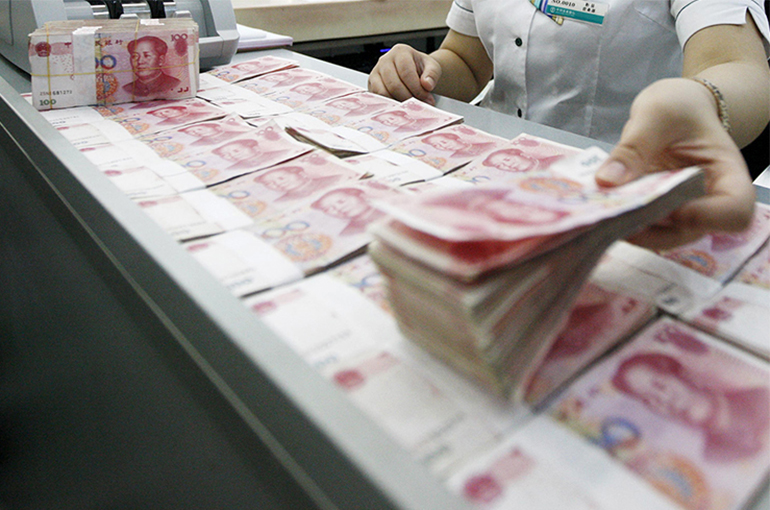 CCF, Offshore Central Bank Bills Stabilize Chinese Yuan at Around 7.25 Versus US Dollar
CCF, Offshore Central Bank Bills Stabilize Chinese Yuan at Around 7.25 Versus US Dollar(Yicai) Nov. 21 -- The gradual weakening of the Chinese yuan against the US dollar over the past two weeks has halted at around 7.25 this week thanks to the Counter-Cyclical Factor and more redback bill sales by China's central bank in Hong Kong.
The US dollar index has also stabilized at around 107 and entered a consolidation phase after a soaring period. The China Offshore Spot traded at 7.2478 and the yuan at 7.2419 versus the greenback as of 12.15 p.m. Beijing time today, with the US dollar index at 106.54.
The impact of the CCF was negligible between Nov. 4 and 8, but it became more significant the week after, several foreign bank forex traders and strategists told Yicai.
The People's Bank of China introduced the CCF, a crucial mechanism in the country's exchange rate policy, to manage the redback exchange rate fluctuations in 2017. It adjusts the daily yuan versus the US dollar central parity rate formula, effectively curbing excessive currency volatility and stabilizing market expectations.
Based on previous trends, the CCF is reactivated when the yuan faces sustained depreciation pressure, helping to counteract procyclical market sentiment. Conversely, when the redback shows consistent appreciation, the CCF is gradually phased out of the pricing mechanism.
Since Nov. 13, the CCF has been at between -500 and -300 points, signaling a stable intention to strengthen the central parity rate, according to an estimate by Hua Chuang Securities. The figure was at only -8 points on Nov. 8 and at -28 points on Nov. 11.
In addition, the PBOC issued the 10th and 11th issues of the 2024 central bank bills in Hong Kong with three-month and one-year maturities, totaling CNY45 billion (USD6.2 billion), traders noted, adding that such moves generally aim to stabilize the yuan.
China's central bank may leverage forex swaps, offshore central bank bills, and forex reserve requirement ratios to adjust the exchange rate based on market conditions. However, it is widely expected that the lender has limited willingness to boost the yuan significantly.
After US President-elect Donald Trump takes office in January, China and other Asian countries might face tariff risks, UK lender Barclays said to Yicai. The PBOC will monitor the spot rate of the yuan versus the US dollar and observe the China Foreign Exchange Trade System currency basket trend, and if the redback becomes too strong compared to other Asian currencies, it could affect China's export competitiveness, it added.
Institutions expect the yuan to likely fluctuate below 7.3 against the US dollar, according to Goldman Sachs. The greenback versus the CNH will not exceed 7.3 this year because the PBOC plans to support the yuan to restore domestic confidence and avoid escalating tensions with the US before formal tariffs are announced, it noted.
The Chinese government will likely enhance policy support to boost domestic demand in 2025 and 2026, Wang Tao, head of Asia Economic Research and chief China economist at UBS, said to Yicai. By the end of next year, the yuan will depreciate versus the US dollar, but the government will not actively devalue the currency as a macroeconomic policy tool, Wang pointed out.
Editor: Martin Kadiev